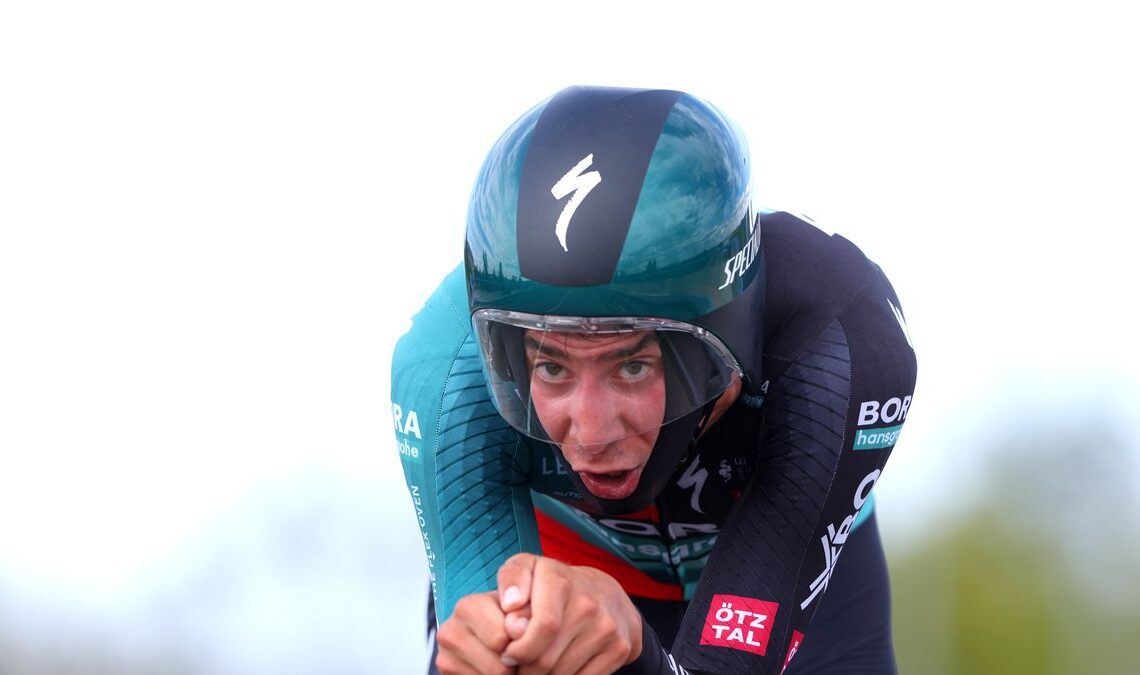Just hours after Team Visma-Lease a Bike broke the internet with the unveiling of the beyond-wild Giro Aerohead II time trial helmet, the UCI has issued a statement, announcing it will carry out an “in-depth analysis” of its rules governing time trial helmet design.
Within the statement, it announced it is banning the ‘Head Sock’ which features inside Specialized’s TT5 helmet, first shown at the 2022 Tour de France and used regularly by sponsored riders since.
Over recent years, time trial helmets have gotten weirder. They’re bigger, wider, and more bulbous than ever as engineers and aerodynamicists attempt to push the boundaries of the rulebook to find free speed.
That culminated in Giro unveiling a helmet with a huge protruding leading edge, sitting some 20cm higher than the wearer’s head, while shrouding the rider’s shoulders, essentially pushing air smoothly around the rider’s body. It’s a technique that other brands have employed, too. For example, the Sweet Protection Redeemer 2Vi, which is used by Uno-X Pro Cycling, and the POC Tempor, used by multiple teams. Elsewhere, Ineos Grenadiers, who use the less radical Kask Bambino Pro, have been known to upsize their helmet – essentially wearing one that’s a few sizes too big – to achieve a similar effect, while adding wind deflectors to the lens.
The UCI’s statement, which bears the title ‘The UCI to carry out an in-depth analysis of the regulations governing the design and use of time trial helmets,’ begins by saying that “the constant quest for improved performance and ever-increasing attention given to detail is leading professional teams and equipment manufacturers to develop their equipment more often and with ever more radical designs.”
Evidently, this process was already underway before the social media storm that surrounded the Visma-Lease a Bike team on the opening stage of Tirreno Adriatico, as the statement continues to say that the UCI has already Specialized that it had undertaken a review of its latest helmet.
“After conducting a thorough process, which included consultation with Specialized, as well as examination of documentation linked to the helmet’s certification, safety instructions, and information from public sources, it was…
Click Here to Read the Full Original Article at CyclingNews RSS Feed…

